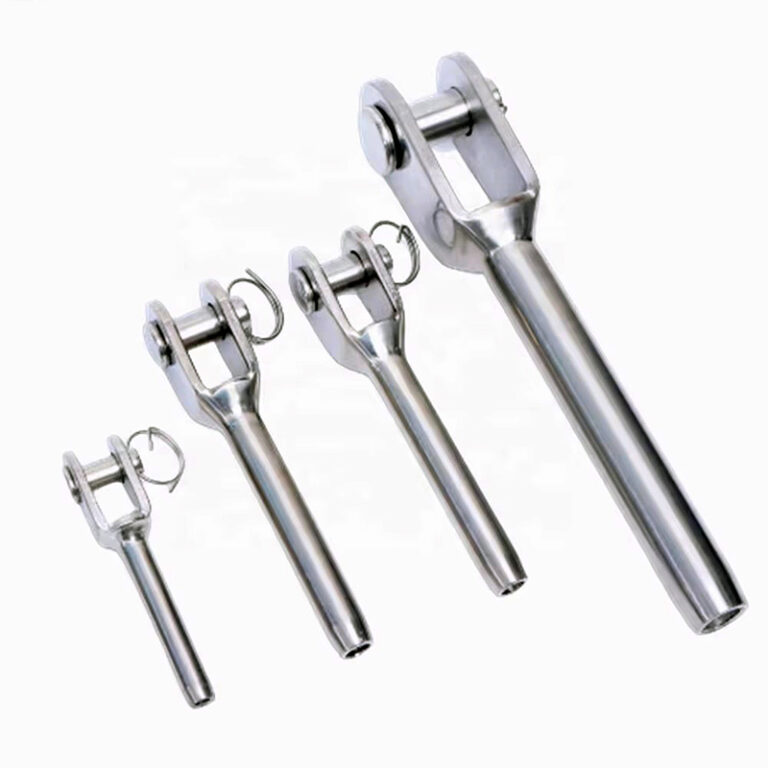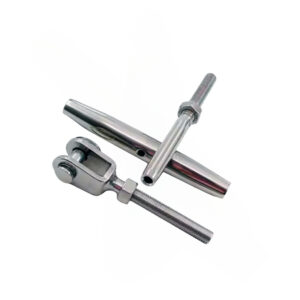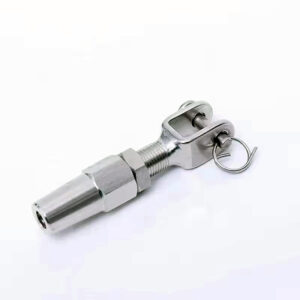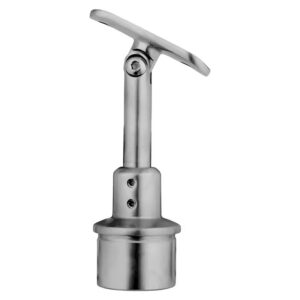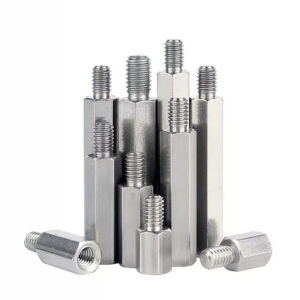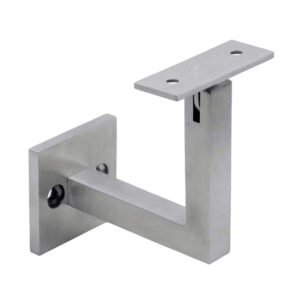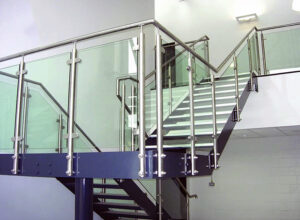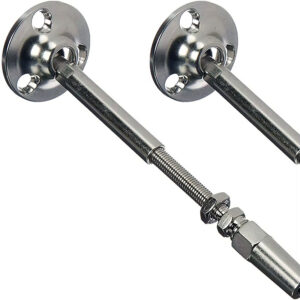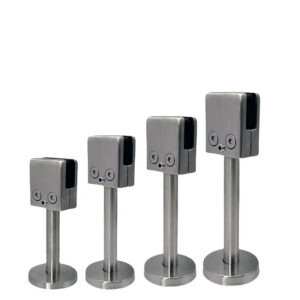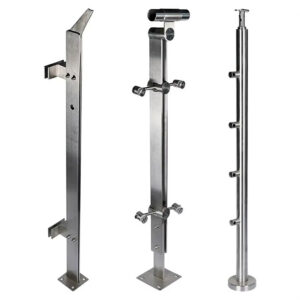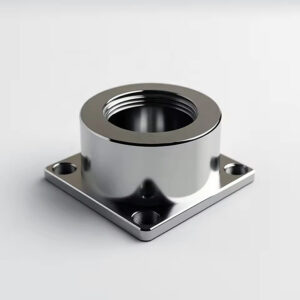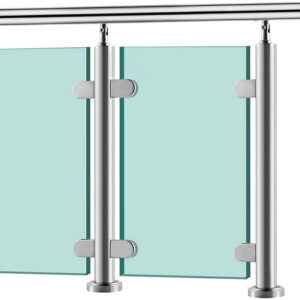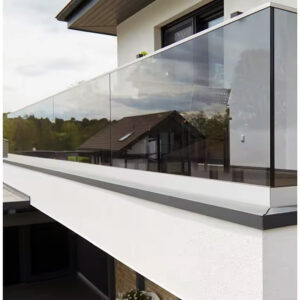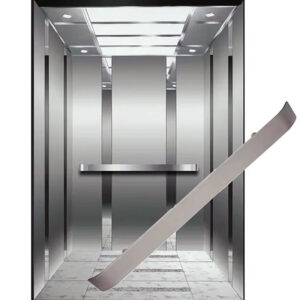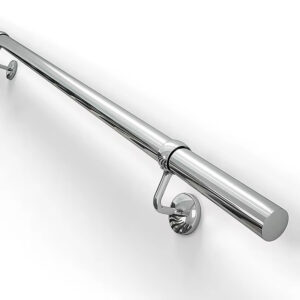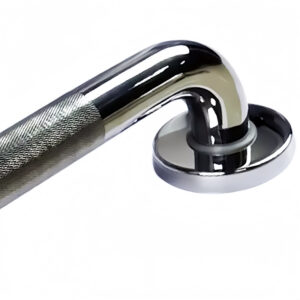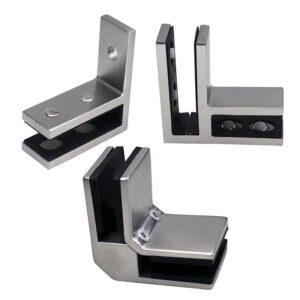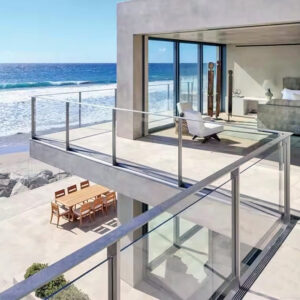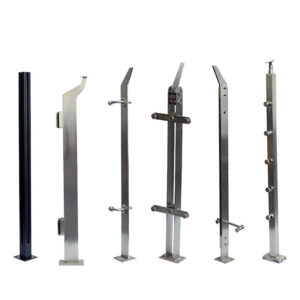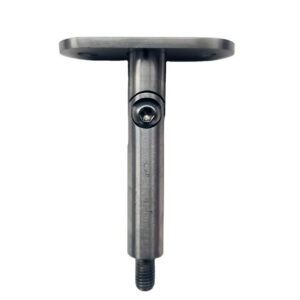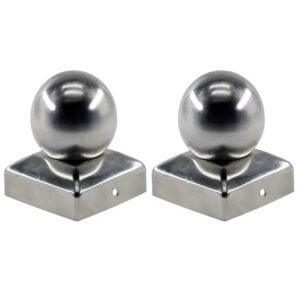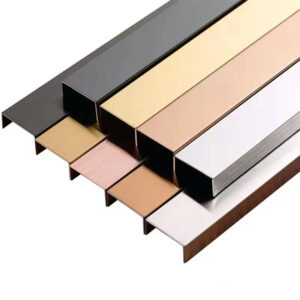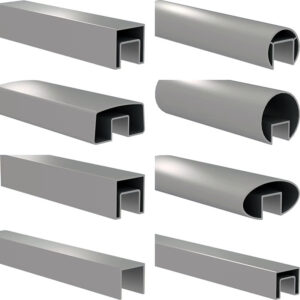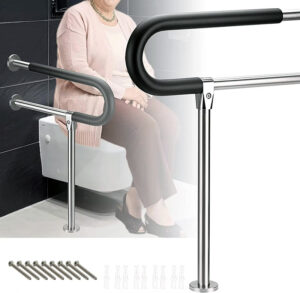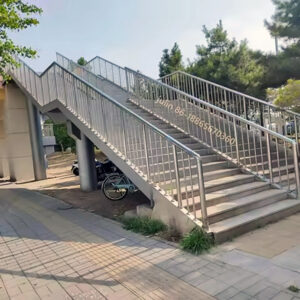When your cable railing project depends on terminals that actually hold under tension and weather the environment, you need more than basic hardware store components. Fork end cable terminals form the critical connection points in cable railing systems, and choosing the wrong grade or poorly manufactured components costs you callbacks, safety issues, and reputation damage. After 23 years manufacturing precision railing hardware, we’ve seen what works in real installations and what fails when projects demand reliable performance.
Understanding Fork End Cable Terminal Systems
Core Terminal Types and Applications
Fork end cable terminals serve as the primary connection method for cable railing systems across residential, commercial, and marine applications. These terminals transfer cable tension loads to mounting posts and structural supports, making material grade and manufacturing precision critical for system integrity.
Standard Fork Terminal Configurations:
- Threaded fork ends for adjustable tension systems
- Welded fork terminals for permanent installations
- Swivel fork ends for angular cable runs
- Heavy-duty terminals for high-load commercial applications
- Marine-grade 316L terminals for coastal environments
The precision fork terminal hardware market has evolved toward modular systems that simplify inventory management while ensuring component compatibility. Contractors tell us standardized terminals reduce installation time by eliminating custom fabrication delays and field sizing issues.
Material Selection Reality:
- 304 stainless works for most interior and protected exterior applications
- 316 stainless handles coastal and industrial environments with chloride exposure
- 316L provides superior corrosion resistance for marine installations
- Surface finish affects both durability and maintenance requirements
Manufacturing Standards That Matter
Fork end terminal fabrication 316L requires controlled processes to maintain material properties and dimensional accuracy. Our manufacturing approach focuses on consistent thread tolerance, proper heat treatment, and surface finish quality that performs in real-world installations.
“Terminal hardware failures typically trace back to inadequate material selection or poor manufacturing tolerance control.” —Marine Hardware Engineering Association
Quality fork terminals start with proper material certification, continue through precision machining with verified thread specifications, and finish with appropriate surface treatment for the intended environment. Experience shows terminals meeting these standards deliver 15-20 year service life in typical applications.
Technical Specifications and Performance Data
Load Capacity and Safety Factors
| Terminal Type | Working Load (lbs) | Breaking Strength (lbs) | Thread Size | Application |
|---|---|---|---|---|
| Standard Fork 304 | 500 | 2000 | 1/4″-20 | Residential, Interior |
| Heavy Duty Fork 304 | 750 | 3000 | 5/16″-18 | Commercial, Exterior |
| Marine Fork 316 | 500 | 2000 | 1/4″-20 | Coastal, Protected |
| Heavy Marine 316L | 1000 | 4000 | 3/8″-16 | Marine, High Load |
Material Comparison for Different Environments
| Environment | Material Grade | Expected Service Life | Maintenance Schedule | Cost Factor |
|---|---|---|---|---|
| Interior Residential | 304 Brushed | 20+ years | Annual inspection | 1.0x |
| Exterior Commercial | 304/316 | 15-20 years | Semi-annual | 1.2x |
| Coastal/Marine | 316L | 15-25 years | Quarterly cleaning | 1.8x |
| Industrial Chemical | 316L Special | 10-15 years | Monthly inspection | 2.2x |
▶ Get Detailed Specifications ◀
Real Project Applications and Results
Commercial Fork Terminal Systems Implementation
A recent 12-story office complex installation demonstrated the impact of proper fork terminal selection on project timeline and long-term performance. The project specified custom fork end manufacturing for 340 linear feet of cable railing across multiple floors and configurations.
Project Specifications:
- Material: 316 stainless steel for exterior applications
- Load requirement: 750 lbs working load per terminal
- Installation timeline: 6 weeks total
- Environmental factors: Urban pollution, temperature cycling
Using standardized fork terminals with verified load ratings, the installation team completed the project 8 days ahead of schedule. The modular approach eliminated field fabrication time and reduced material waste by approximately 15%.
Marine Grade Fork Cable ODM Solutions
Coastal resort projects present unique challenges requiring marine grade fork cable ODM capabilities. A 500-unit residential development in Florida required fork terminals capable of handling salt air exposure while maintaining aesthetic appeal over 20+ year service life.
Performance Results After 3 Years:
- Zero terminal failures requiring replacement
- Minimal surface degradation with quarterly cleaning
- No loosening issues requiring retensioning
- Installation time averaged 40% faster than custom fabrication
“Standardized marine terminals reduced our coastal project costs by 25% while improving reliability.” —Southeast Contractors Association
Industrial and Infrastructure Applications
Manufacturing facilities and infrastructure projects demand fork terminals that maintain performance under continuous vibration, temperature cycling, and potential chemical exposure. Recent installations in food processing and pharmaceutical facilities showcase custom fork terminal manufacturing adapted for specific facility requirements.
▶ Discuss Your Project Requirements ◀
Installation Efficiency and System Integration
Modular Installation Advantages
Commercial fork terminal systems designed for modularity reduce installation complexity while maintaining design flexibility. Standardized components eliminate field measurement errors and reduce the skill level required for proper installation.
Installation Time Comparison:
| System Type | Setup Time | Field Adjustments | Tool Requirements | Skill Level |
|---|---|---|---|---|
| Custom Fabricated | 4-6 hours/section | Frequent | Specialized | High |
| Semi-Modular | 2-3 hours/section | Occasional | Standard + | Medium |
| Full Modular | 1-2 hours/section | Minimal | Standard | Medium-Low |
Quality Control and Precision Manufacturing
Our 23 years of manufacturing experience has refined quality control processes that ensure terminal consistency and reliability. Each fork terminal undergoes dimensional verification, load testing, and surface finish inspection before shipping.
Manufacturing Quality Standards:
- Thread tolerance: Class 2A for consistent fit
- Surface finish: 32 RMS maximum for corrosion resistance
- Load testing: 150% of working load minimum
- Material certification: Mill test reports for each batch
Installation teams report 95% first-time fit success with properly manufactured terminals, compared to 60-70% with lower-precision alternatives. This translates to significant time savings during installation and fewer callbacks for adjustment.
▶ Connect with Manufacturing Engineering ◀
Frequently Asked Questions
How do I select the correct fork terminal material for my project environment?
Interior and protected exterior applications typically work well with 304 stainless steel terminals. Coastal environments within 5 miles of saltwater require 316 stainless minimum, with 316L recommended for direct marine exposure. Industrial facilities with chemical exposure need material evaluation based on specific chemicals present.
What’s the real difference between custom and standard fork terminals for project timelines?
Standard terminals ship within 5-7 business days and install with common tools. Custom terminals require 3-4 weeks fabrication time plus potential field fitting issues. Most projects save 2-3 weeks using standard terminals with modular design flexibility.
How do working loads translate to actual cable tension requirements?
Fork terminals rated at 500 lbs working load safely handle typical residential cable tensions of 200-300 lbs with appropriate safety factor. Commercial applications requiring 400-500 lb cable tensions need terminals rated for 750+ lbs working load to maintain safety margins.
What maintenance schedules make sense for different terminal materials and environments?
304 stainless in interior applications needs annual inspection. Exterior 304/316 installations benefit from semi-annual cleaning and inspection. Marine 316L terminals require quarterly cleaning with fresh water and semi-annual detailed inspection for any signs of crevice corrosion.
Can I mix terminal types within the same railing system?
Terminal compatibility depends on cable type, post mounting systems, and aesthetic requirements. Mixing materials (304 and 316) in the same system can create galvanic corrosion issues in moisture-prone environments. Consistent material selection provides better long-term performance.
What are realistic service life expectations for quality fork terminals?
Properly selected and installed terminals typically provide 15-20 years service life in appropriate environments. Interior installations often exceed 20 years. Marine applications with proper maintenance achieve 15-25 years. Industrial chemical environments require evaluation based on specific exposure conditions.
▶ Get Application-Specific Guidance ◀
Competitive Analysis and Selection Criteria
Market Positioning and Honest Comparisons
| Supplier Type | Strengths | Limitations | Best Applications |
|---|---|---|---|
| Esang Metal | 23-year manufacturing experience, precision tolerances, system integration support | Premium pricing | Complex projects requiring reliability |
| Import Suppliers | Low initial cost, basic functionality | Quality inconsistency, limited support | Simple residential projects |
| Custom Fabricators | Project-specific solutions | Long lead times, higher costs | Unique architectural requirements |
| Standard Distributors | Quick delivery, familiar products | Limited technical support | Standard commercial applications |
Selection Criteria by Project Type
High-Rise Commercial: Prioritize load capacity, code compliance documentation, and supplier technical support capability.
Coastal Residential: Focus on material grade verification, surface finish durability, and maintenance requirements.
Industrial Facilities: Emphasize chemical compatibility, vibration resistance, and replacement part availability.
Architectural Projects: Balance aesthetic requirements with performance specifications and long-term maintenance costs.
“Best terminal selection balances initial cost with lifecycle performance and maintenance requirements.” —Building Hardware Specification Institute
The fork end cable terminal market offers numerous options, each with specific advantages for different applications. Project success depends on matching terminal specifications to actual environmental conditions, load requirements, and maintenance capabilities rather than simply choosing the lowest initial cost option.
Our manufacturing experience and commitment to precision engineering provide reliable solutions for projects where performance matters more than minimum cost. Quality terminals reduce installation time, minimize callbacks, and deliver predictable long-term service life across diverse applications.
